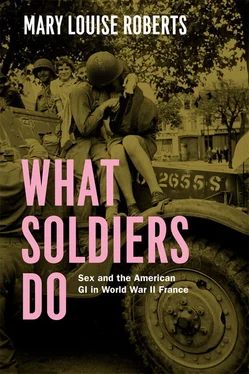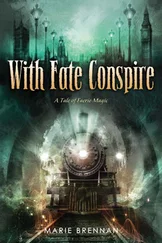127 Walter Brown, Up Front with U.S . (np: Author, 1979), 46, 369.
128 See USAJ, CMC 3691, Houston, 32. Houston was sentenced to life in prison.
129 USAJ, CMC 8163, Davison.
130 HOBR, CMC 6227, 16: 233–38.
131 See USAJ, CMC 309176, Wilbur Starr. Starr was a Chippewa Indian from Fond du Lac, Wisconsin. See also USAJ, CMC 3740, Sanders, Wilson, and Anderson; HOBR, CMC 3691, 9:183–87; CMC 4072, 11:337–43; CMC 5009, 14: 53–65.
132 132 HOBR, CMC 10103, 22:91–95.
133 USAJ, CMC 3750, Bell; USAJ, CMC 4775, Teton and Farrell.
134 USAJ, CMC 4194, Scott.
135 Peter Schrijvers notes that the prosecution of African Americans for alleged rapes against Belgian women also resulted in harsher penalties than in the cases of white soldiers. See Peter Schrijvers, Liberators: The Allies and Belgian Society, 1944–1945 (Cambridge: Cambridge University Press, 2009), 229–30.
136 Lilly, Taken by Force , 61–63. On this point, see also Barbeau and Henri, The Unknown Soldiers , 144.
137 HBO-JAG, 10.
138 Terkel, The Good War , 391–92; NARA, RG 338, Box 75. Correspondence in this box reveals attempts by the American military to find an experienced hangman.
139 Hodes, White Women , 2–3, 6, 147–48, 157, 175–208.
140 For the motive of deterrence, see NARA, RG 498, Box 27, memo dated 16 November 1944.
141 NARA, RG 498, Adjutant General’s Section Administration Branch, General Correspondence (1944–45), Box 28, 250.1–250.4 (hereafter Box 28), memo dated 31 August 1944.
142 NARA, RG 498, Box 27, “Let’s Look at Rape.” The pamphlet is not dated but given its placement in the file, it was probably circulated to black chaplains in the fall of 1944. According to a letter in the file by Brig. Gen. Benjamin O. Davis, the pamphlet was written by Chaplain Beverly War, Sixty-Fourth Ordnance. Davis claims that the pamphlet received a positive response from black soldiers.
143 See ADM, 145 W 26, Relations avec les autorités alliés.
144 Ibid.
145 See Lilly, Taken by Force , 163. See also Frank Irgang, Etched in Purple (Caldwell, ID: Caxton Printers, 1949), 163.
146 ADM, 13 num 3133.
147 ADM, 13 num 3135.
148 I found very few cases concerning violence on the part of British and Canadian troops in all the archives I consulted, and certainly no evidence of any widespread problem.
149 ADM, 13 num 3172.
150 NARA, RG 331, Entry 6, Box 11, letter dated 3 November 1944. Maj. Gen. Alphonse Juin passed along the article to Eisenhower as well as a memo about it written by French Lieutenant General Legentilhomme, at that time commander of the French Third Military Region in Rouen. In the memo, Legentilhomme argued that “if the Americans cannot bring women for the needs of their men, at least let them respect French women.” Eisenhower received a different translation of the “warning” than the one presented by Norman Intelligence. Both translations were bad, which is why I provide my own here.
151 ADM, 13 num 3172.
152 ADM, 13 num 3177. The British also began to use the Cherbourgeoise rhetoric of terror to describe African American troops. See, for example, ADC, 726 W 16 905, “Correspondance avec les autorités militaires alliées au sujet de sepultures alliées et enemies,” undated memo titled “Violation of French Women by American Black Soldiers.”
153 Institut d’Histoire du Temps Présent (hereafter IHTP), ARC 1074–62 Alliés (2), Voici nos alliés, Les États-Unis , no. 2; and ARC 074 Alliés (7), Saint-John de Crèvecoeur, Qu’est-ce qu’un américain? [reprint of 1774 text] (Washington, DC: OWI, 1943).
154 IHTP, USA , 1, 2, nd; ARC 1074–62 Alliés (2), Voici nos alliés, Les États-Unis , no. 2 (nd); L’Amérique en guerre , 12 April 1944.
155 Voici nos alliés , no. 2 (nd); USA , 1, 2. Les combattants des États-Unis (Washington, DC: OWI, 1944) contains a portrait of a “red-skinned American” as a “typical” American soldier “who is very proud that his ancestors were the first Americans.”
156 In Rennes, for example, a “Gala Cinema Night” was held 11 August at the Royal, the Celtic, and the Select theaters downtown. Here civilians applauded films on the American jeep and an oil pipe built across Texas, as well as newsreels lauding Allied military victories. See Ouest France , 11 August 1944.
157 NARA RG 331, Entry 6, Box 11, memo dated 17 February 1945.
158 Saturday Evening Post , 21 October 1944.
159 Harvard Sitcoff, “African American Militancy in the World War Two South,” in McMillen, Remaking Dixie , 72–74.
160 Roeder Jr., The Censored War , 44.
161 On this issue, see Nelson Peery, Black Fire: The Making of an American Revolutionary (New York: New Press, 1994), 52.
162 Roeder Jr., The Censored War , 4, 8, 44–47, 56–57.
163 Kim Munholland, “Donald Duck in the South Pacific, or the Americanization of New Caledonia, 1942–1945” (unpublished ms.). Munholland argues, 10, that between February and November 1943 there were twenty-five cases of rape, attempted rape, or assault with intention to commit rape. Of the twenty-five accused, eighteen were African American. On New Caledonia, see also Peery, Black Fire , 233. In New Guinea, six black soldiers were convicted and executed by rope for allegedly raping two white nurses in March 1944. On this case, see Ray Luszki, A Rape of Justice: MacArthur and the New Guinea Hangings (Lanham, MD: Madison Books, 1991); and Moore, Fighting for America , 214–16. For black soldiers in Australia, see Chicago Defender , 3 June 1944.
164 According to MacGuire, Hastie , 87–88, these problems included a forced confession and inadequate acknowledgment on the part of the court that the accuser had a reputation for dishonesty and sexual promiscuity. A French colony, New Caledonia was occupied by American troops during the Second World War in order to use as an air base. It was the French governor of the colony who brought the original charges against the two black soldiers, and who also stated to the press that “the colored troops are the terror of the white women of Caledonia.” See Chicago Defender , 8 January 1944.
165 For a full account of the case, see Moore, Fighting for America , 211–15.
166 For commentary in the black community on the role of the British press, see New York Amsterdam News , 24 June 1944; Atlanta Daily World , 14 June 1944; Pittsburgh Courrier , 17 June and 1 July 1944; Richmond African American and Baltimore African American , 17 June 1944; Chicago Defender , 30 September 1944; Crisis , July 1944.
167 On the petition campaign, see Pittsburgh Courier , 24 June 1944, and New York Amsterdam News , 29 July 1944.
168 On the militant role of the black press during the war, see Lee Finkle, “The Conservative Aims of Militant Rhetoric: Black Protest during World War II,” Journal of American History 60 (1973): 692–713, and Finkle, Forum for Protest: The Black Press during World War II (Rutherford, NJ: Fairleigh Dickinson University Press, 1975).
169 Christopher Waldre, African Americans Confront Lynching: Strategies of Resistance from the Civil War to the Civil Rights Era (Lanham, MD: Rowman and Littlefield Publishers, 2009), 86.
170 Glenda Gilmore, Defying Dixie: The Radical Roots of Civil Rights, 1919–1950 (New York: W. W. Norton, 2008), 394, 397.
171 The Crisis , March 1944.
172 The Crisis , June 1944.
173 The Crisis , July 1944.
Читать дальше












